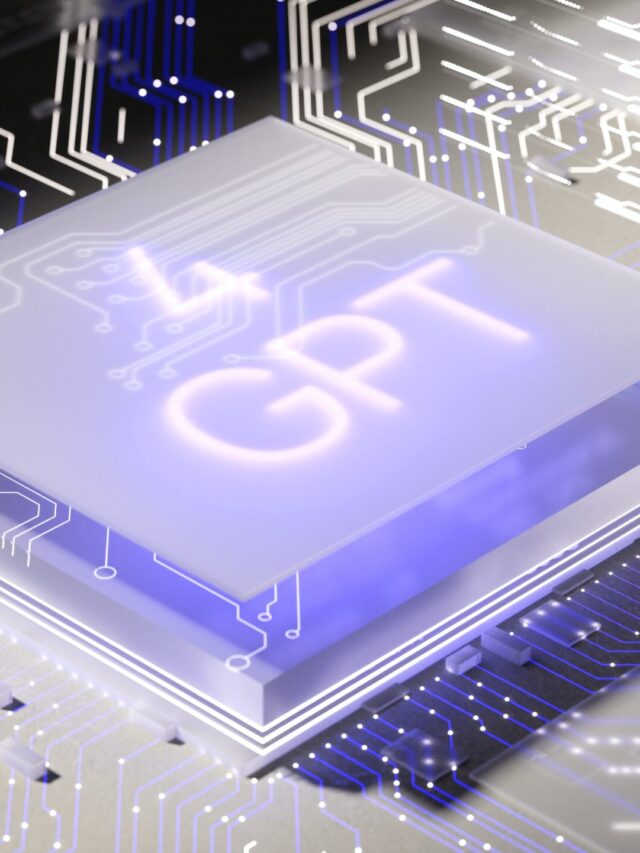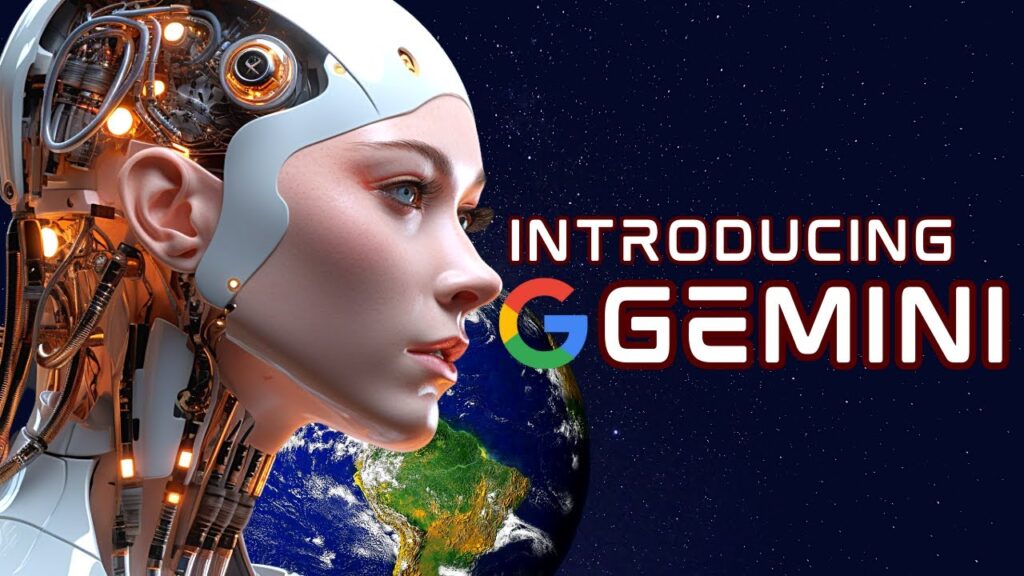Choosing the “best” among these three AI marvels depends entirely on your specific needs and priorities. If you require a multimodal LLM for complex tasks demanding high accuracy and fluency, Gemini might be your champion. However, if you prioritize user-friendliness and engaging conversational interactions, Bard could become your preferred companion. ChatGPT4 shines in creative text generation and engaging dialogue, making it ideal for content creation and entertainment applications.



Unpacking the Potential of Google’s Bard, ChatGPT4, and the Rising Star – Gemini
Introducing the Contenders
Google Gemini: This family of large language models (LLMs) encompasses three distinct models – Gemini Ultra, Gemini Pro, and Gemini Nano – catering to diverse needs and resource constraints. Gemini’s multimodality sets it apart, excelling in understanding and generating text, code, audio, and even images.
Google Bard: This LLM prioritizes user experience, designed for accessibility and intuitiveness. Bard excels in conversational fluency, creative text generation, and contextual help, ensuring reliable information access.
ChatGPT4: Developed by OpenAI, this LLM boasts impressive conversational fluency and creative text generation capabilities. It shines in generating human-like dialogue, writing diverse creative content, and translating languages.
Decoding the Key Differences
Strengths
Gemini:
- Multimodality: This means Gemini can process and understand information from various sources, not just text. For example, it could analyze images, audio, and video alongside text to give you a more complete understanding of a topic.
- Superior accuracy and fluency: Gemini performs exceptionally well on benchmark tasks like question answering and summarization, and it generates grammatically correct and clear language.
- Scalability: Gemini can handle large amounts of data and complex tasks efficiently, making it suitable for real-world applications like search engines and virtual assistants.
- Continuous learning and improvement: Gemini constantly learns from new data and user feedback, ensuring it stays up-to-date and improves over time.
Bard:
- Ease of use: Bard is designed to be user-friendly, even for people with no technical background. It’s accessible through a simple interface and provides clear instructions and prompts.
- Conversational fluency: Bard can have natural and engaging conversations, understanding context and responding appropriately. It avoids technical jargon and focuses on clear communication.
- User-centric design: Bard prioritizes user needs and feedback. It constantly evolves based on user interactions and aims to provide a personalized and helpful experience.
- Active community engagement: Bard has a dedicated community of users and developers who contribute to its development and share their experiences. This ensures a diverse and constantly growing knowledge base.
ChatGPT4:
- Conversational fluency: Similar to Bard, ChatGPT4 excels at carrying on natural and engaging conversations. It can adapt its tone and style depending on the context and interlocutor.
- Creative text generation: ChatGPT4 excels at generating different creative text formats, including poems, code, scripts, musical pieces, emails, letters, etc. It allows for exploration and experimentation with language.
- Vast user base: ChatGPT4 has a large and active user base, leading to a wealth of feedback and data for its development. This contributes to its overall improvement and relevance.
- Extensive research and development: OpenAI, the creators of ChatGPT4, invests heavily in research and development, pushing the boundaries of what’s possible with language models. This ensures ChatGPT4 remains at the forefront of the field.
In summary, each language model has its unique strengths. Gemini emphasizes accuracy, flexibility, and continuous learning, while Bard focuses on user-friendliness, community engagement, and conversational skills. ChatGPT4 stands out for its creative text generation, vast user base, and commitment to research and development.
Ultimately, the “best” language model depends on your specific needs and preferences. Consider what tasks you want the model to perform and what qualities are most important to you.
Weaknesses
Gemini:
- Limited access to the most powerful models: Currently, access to Gemini’s most advanced capabilities might be restricted to certain users or research groups. This limits its potential for wider adoption and real-world applications.
- Potential for bias due to training data: Like any AI system, Gemini’s outputs can be influenced by biases present in its training data. It’s crucial to be aware of this and utilize appropriate mitigation strategies to ensure fairness and inclusivity.
- Still under development: As a relatively new language model, Gemini is still evolving and learning. This means it might encounter errors or produce unexpected results in certain situations.
Bard:
- Less suited for complex tasks requiring multimodal understanding: While Bard performs well on text-based tasks, it might struggle with scenarios requiring comprehension of other data types like images, audio, or video. This limits its applicability in certain domains.
- Potential for misinterpretations due to reliance on user input: Bard heavily relies on user prompts and instructions. If these are unclear or inaccurate, it can lead to misinterpretations and misleading outputs. Careful user input is crucial for optimal results.
ChatGPT4:
- Can be prone to factual inaccuracies: ChatGPT4 excels at generating creative text formats, but its factual accuracy might not always be perfect. It’s essential to cross-check its outputs with reliable sources, especially for factual claims.
- Limited ability to understand complex queries: While ChatGPT4 can handle basic conversational queries, complex questions requiring deep reasoning or multi-step information retrieval might pose challenges.
- Potential for misuse and manipulation: Like any powerful language tool, ChatGPT4 has the potential for misuse or manipulation. Its ability to generate realistic text could be used for spreading misinformation or creating harmful content. Responsible use and awareness of these risks are essential.
It’s important to remember that these limitations are inherent to the current state of language model technology. Researchers and developers are constantly working to improve accuracy, reduce bias, and expand capabilities. Ultimately, the key is to use these models responsibly and critically evaluate their outputs, while appreciating their potential to enhance communication and creativity.
Market Figures
AI market size: Projected to reach $1.57 trillion by 2028.
- ChatGPT4: Launched in May 2023, it already has a large user base and is publicly available.
- Gemini: Still under development in limited beta, but its wider adoption is expected in the coming years.
- Bard: Released in August 2023, it’s publicly available and steadily gaining traction with a growing user base.
Applications
Gemini:
- Education: Gemini’s ability to handle complex tasks and multimodal understanding makes it suitable for personalized learning experiences, intelligent tutoring systems, and automated educational content creation.
- Healthcare: In healthcare, Gemini can assist with medical research, analyze medical data, and even facilitate patient-doctor communication through virtual assistants. Its accuracy and continuous learning capabilities are crucial in this sensitive field.
- Creative industries: From designing products and generating marketing materials to composing music and writing scripts, Gemini’s creative text generation and multimodality could revolutionize various creative fields.
- Scientific research: Gemini’s ability to process and understand vast amounts of data can significantly accelerate scientific research by assisting with data analysis, hypothesis generation, and even suggesting new research directions.
- Business and productivity: For businesses, Gemini can streamline operations by automating tasks, providing data insights, and even predicting market trends. Its scalability makes it suitable for both small and large companies.
Bard:
- Education: Similar to Gemini, Bard can personalize learning experiences and provide intelligent tutoring support. Its user-friendliness makes it accessible for students of all ages and skill levels.
- Content creation: Bard excels at generating different creative text formats, making it a valuable tool for writers, bloggers, and marketers. Its conversational fluency also aids in creating engaging presentations and scripts.
- Personal assistance: Bard can act as a helpful personal assistant, managing schedules, booking appointments, and answering questions. Its reliance on user input allows for personalized experiences.
- Customer service: In customer service, Bard can handle basic inquiries, resolve issues, and even personalize interactions with customers. Its conversational fluency and user-centric design make it ideal for this role.
- Entertainment: Bard can tell stories, write poems, and even play games, making it a versatile tool for entertainment purposes. Its vast knowledge base ensures endless possibilities for creative exploration.
ChatGPT4:
- Marketing: ChatGPT4’s ability to generate creative text formats and understand complex queries makes it perfect for crafting marketing campaigns, writing advertising copy, and analyzing customer data.
- Entertainment: Similar to Bard, ChatGPT4 can be used for storytelling, game development, and various other entertainment purposes. Its vast user base can also be valuable for testing and refining entertainment content.
- Customer service: Like Bard, ChatGPT4 can handle basic customer inquiries and even personalize interactions. However, its potential for factual inaccuracies might require extra caution in this domain.
- Writing and translation: ChatGPT4’s fluency in multiple languages and creative text generation capabilities make it suitable for writing different types of content and even translating languages with impressive accuracy.
- Personal assistance: Similar to Bard, ChatGPT4 can assist with tasks like scheduling and answering questions. However, its potential for misuse and manipulation requires careful consideration when used for personal assistance.
Ultimately, the ideal application for each language model depends on the specific needs and requirements of the task at hand. Each model has unique strengths and weaknesses, making it crucial to choose the one that best aligns with the intended use case.
The Future of AI Collaboration
Focusing on a collaborative approach toward language models offers incredible potential. Instead of viewing them as competitors, framing them as a diverse ensemble with unique strengths fosters exciting possibilities for advancements in AI capabilities.
Here’s a breakdown of why collaboration holds such promise:
Synergy of strengths
- Gemini’s multimodality combined with Bard’s user-friendliness could lead to incredibly intuitive interfaces that process not just text but also images, audio, and video, seamlessly enriching the user experience.
- Bard’s conversational fluency coupled with ChatGPT4’s creative prowess could pave the way for captivating storytelling, scriptwriting, and even personalized interactive narratives that blur the lines between human and AI creativity.
- ChatGPT4’s vast user base combined with Gemini’s continuous learning could create a powerful feedback loop, continuously refining models’ understanding of language and generating increasingly relevant and accurate content.
Benefits of Collaboration
- Overcoming individual limitations: Each model has its weaknesses. Collaboration allows them to compensate for each other’s shortcomings, leading to more robust and comprehensive outputs.
- Accelerated innovation: By sharing knowledge and learning from each other, models can progress much faster than working in isolation, ultimately benefiting users who enjoy faster access to advanced AI applications.
- Democratizing access: Combining user-friendly interfaces with accurate and creative capabilities can make AI tools accessible to a wider audience, fostering inclusivity and empowering more people to leverage the power of these models.
Of course, challenges exist within this collaborative approach:
- Technical hurdles: Integrating different models requires overcoming technical difficulties like data format differences and ensuring seamless communication between them.
- Bias and ethical considerations: Collaborative models inherit the biases present in their individual components. Careful selection and mitigation strategies are crucial to ensure fairness and ethical use.
- Ownership and control: Sharing data and models raises questions about ownership and intellectual property. Clear guidelines and transparent agreements are necessary for a collaborative ecosystem to thrive.
Despite these challenges, the potential rewards of collaboration far outweigh the risks. By embracing the diverse strengths of each language model and fostering a collaborative spirit, we can unlock new heights in AI capabilities, shaping a future where human and machine intelligence work together to solve challenges and create incredible experiences.
Conclusion
As AI continues to evolve, Google Gemini, Google Bard, and ChatGPT4 will undoubtedly evolve alongside it. Each model offers unique capabilities and applications, pushing the boundaries of AI and impacting various sectors. The future of AI lies in collaboration, harnessing the strengths of each model to create a more intelligent and interconnected world.
Remember, this is just the beginning. As technology advances and these models mature, we can expect them to collaborate and cross-pollinate, further enhancing our understanding and amplifying their potential to impact the world.
